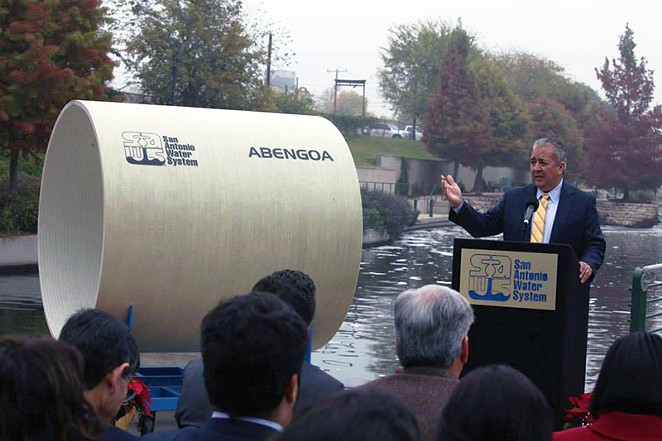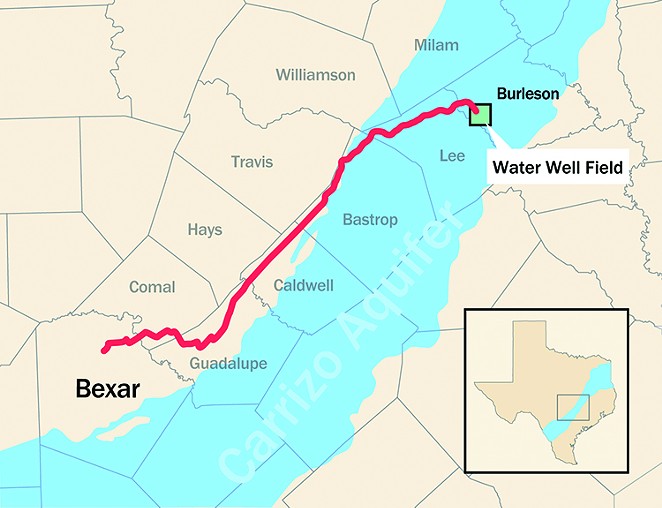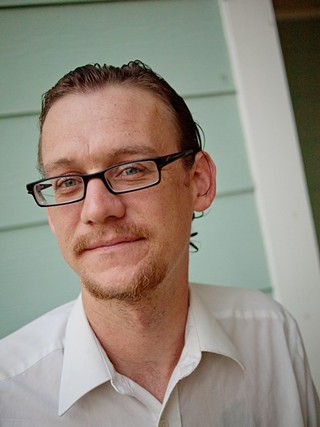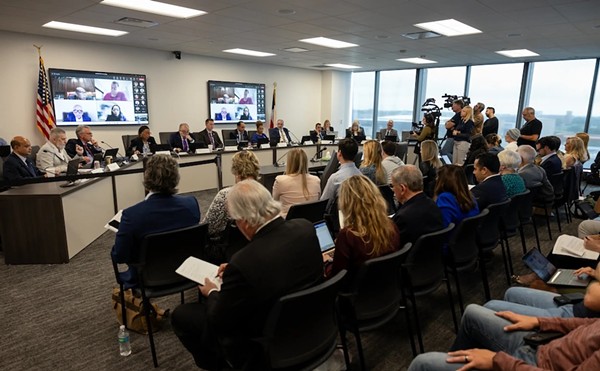Nearly a year ago, San Antonio City Council unanimously approved a $3.4 billion deal to pump water into the city from nearly 150 miles away in Lee and Burleson counties.
The vote followed nearly four hours of public comment from the deal's opponents, who ranged from homeowners to activist groups, and from supporters who were mainly from the chamber of commerce, real estate
And so, the 142-mile pipeline proposed by the Vista Ridge Consortium, which is comprised of the San Antonio Water System, the Spanish-based multinational company Abengoa, and the Austin-based Blue Water water-leasing company, inched closer toward reality.
According to SAWS, the pipeline not only diversifies the city's water portfolio, which has eight existing water sources and a ninth underway, it would also provide San Antonio with a 30-year supply of water from the Carrizo-Wilcox Aquifer. That would meet the needs of an estimated 1.1 million new residents expected to arrive in Bexar County by 2040, SAWS says.
But what will it cost to bring the Vista Ridge Pipeline to fruition?
Ask any member of the Mi Agua Vida Coalition, an anti-pipeline advocacy group, and answers range from increased rates to SAWS customers that would harm low-income families and seniors, to damaging drawdown in the Carrizo-Wilcox Aquifer, to harm to the environment caused by the type of slash-and-burn development and suburban sprawl that this pipeline enables.
Margaret Peggy Day, co-chair for the Alamo Group of the Sierra Club and a member of Mi Agua Vida, said that aside from Vista Ridge Pipeline, two other major projects — by two companies, End Op and
"It's aquifer mining. They are depending a huge population on a water source that will be disappearing," Day said. "The claim is it's for our children and
If Vista Ridge Pipeline, End
Day's drawdown claim is backed up by a South Central Texas Regional Water Planning Area report and another study by hydrologist George Rice. Then there's the impending suburban sprawl foreshadowed by support from real estate developers and construction companies last year when City Council approved the deal.
"One of our second greatest issues is
Land that would likely be developed is full of flora and fauna that is already stressed from drought, and encroaching development north of San Antonio and along the Interstate 35 corridor has already taken thousands of acres of natural areas.
Meanwhile, low-income families and the elderly throughout the city will help foot the bill for the sprawl and the pipeline through rate increases.
Meredith McGuire, a professor of sociology and anthropology at Trinity University and Mi Agua Vida member, said that burden would not be new.
"Ratepayers are already subsidizing the new development. It's also precisely those new developments that are causing the most demand for SAWS water," McGuire said. "And so if those new developments were to stop irrigating their mega-lawns, we wouldn't need that 50,000 acre-feet [per year]."
The Vista Ridge Pipeline will be partially funded through the ratepayers, and the projected average rate for 2020 — the year the pipeline would start pumping — is
According to Graciela Sanchez, director of the Esperanza Peace & Justice Center and Mi Agua Vida member, that's just not fair to San Antonio's most vulnerable populations.
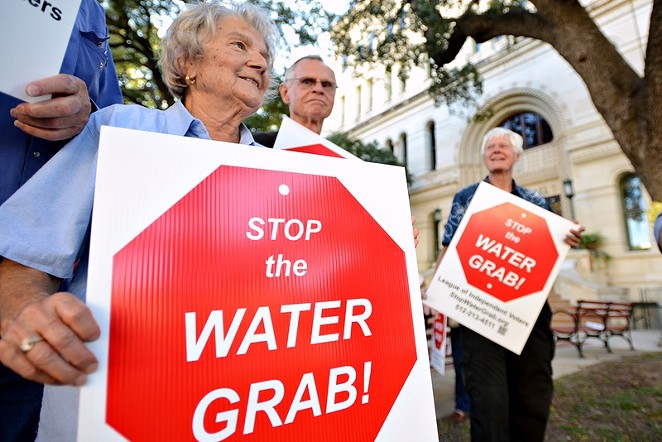
"I think everybody is going to be affected. This is a great outrage," Sanchez said. "Two weeks ago, when all these folks got high water bills ... in the wealthiest district in the city, if they're complaining, if it's a disappointment when they complain, why isn't it when working class, elderly and low-income complain?"
Sanchez is referring to District 9 North Side residents who complained about high water bills, prompting a special City Council session in which SAWS CEO Robert Puente explained that the utility was using blanket estimates for bills, causing errors. He also mentioned bills are typically higher on the North Side, where there are more irrigation systems.
However, for people living on fixed incomes, like fast food employees, seniors or people who work in hotels in downtown San Antonio, a near $30 increase in the next five years will hurt.
City Council was scheduled to vote on the rate increase next week, but a controversial water study that described Vista Ridge as "high-risk" has slowed the effort. That report was by Texas A&M professor Calvin Finch, whom A&M removed as
At a meeting last week, the vote was pushed back until City Council is briefed on the report, which has a new author and isn't yet finished. Eventually, someone leaked Finch's version of the report to the San Antonio Express-News after the city refused to release it. Mayor Ivy Taylor has since provided a link on her city website to the report.
But to the Mi Agua Vida Coalition, that lack of transparency coupled with the urgency from SAWS last year to push the deal through — and now the rate increase proposal — is another problem with the Vista Ridge project.
"What about government accountability and transparency?" Sanchez asked. "It's all a farce."
City Council will vote on the rate increase proposal on November 19.
The San Antonio Current and SAWS weren't able to connect by

